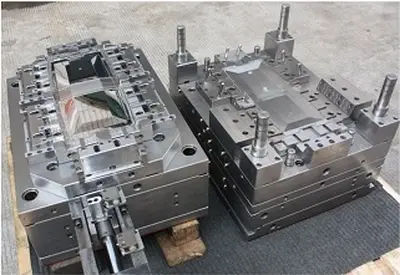

Household appliance products are becoming larger and larger. "one mold with multiple cavities," which is developed to improve production efficiency, also leads to larger and larger household appliance molds. At the same time, the rapid development of home appliances and electronics also brought miniaturization and precision of parts. Some molds require a processing accuracy tolerance of below 1 m.
Therefore, we should use advanced equipment actively to improve home appliance mold manufacturing and achieve significant economic benefits.
High-speed machining is generally used for large household appliances cover molds, and its curved surface machining accuracy can reach 0.01mm. After high-speed milling and finishing, the mold surface of the household appliances mould can be used with only a little polishing. This saves a lot of time for grinding and polishing. High-speed machining greatly shortens the molding cycle, thereby improving the market competitiveness of products.
European and American mold enterprises use CNC high-speed milling. The majority is a five-axis linkage. The spindle speed is generally 15000-30000r/min. In addition, European and American appliance mold enterprises also attach great importance to equipment renewal. The equipment depreciation period is generally 4-5 years. Increasing CNC high-speed milling machine is one of the critical points of equipment investment of mould enterprises.
High-speed scanner and mold scanning system provide many functions from the model or physical scan to processing the desired model, greatly shortening the mold development and manufacturing cycle.
Some rapid scanning systems can be quickly installed in the processing center of the existing CNC milling machine to achieve rapid data acquisition, generate various CNC system processing programs and different formats of CAD data automatically, which can be used in mold manufacturing reverse engineering.
Home appliance mould scanning system has been successfully applied to in-home appliances and other industries in Europe and America.
More than 80% of the plastic moulds for sale produced by many plastic mold factories take use of hot runner technology and its effect is pronounced.
Many enterprises in Europe and the United States have successfully used gas-assisted technology in TV shells, washing machine shells, and some thick wall plastic parts of the household appliance mold.
Gas-assisted injection molding has the advantages of low injection pressure, small warping deformation, good surface quality, and easy to form products with significant differences in wall thickness, which can significantly reduce the cost on the premise of ensuring product quality.






 Call us on:
Call us on:  Email Us:
Email Us:  No.23, XingYi Road, Wusha Community, Chang'an Town, Dongguan City, Guangdong Province, China.
No.23, XingYi Road, Wusha Community, Chang'an Town, Dongguan City, Guangdong Province, China.